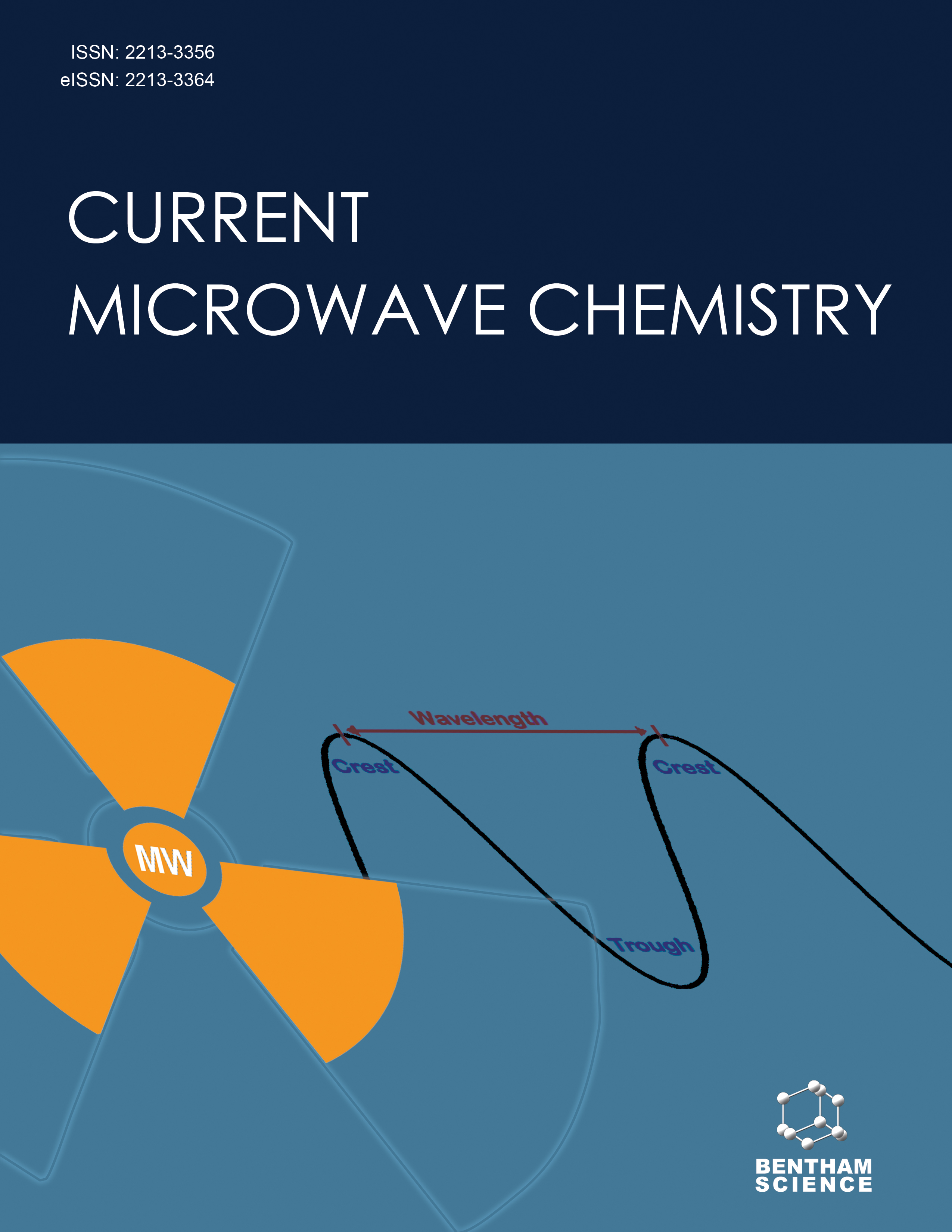- Home
- A-Z Publications
- Current Microwave Chemistry
- Previous Issues
- Volume 7, Issue 2, 2020
Current Microwave Chemistry - Volume 7, Issue 2, 2020
Volume 7, Issue 2, 2020
-
-
Microwave-assisted Carbon-carbon and Carbon-heteroatom Cross-coupling Reactions in Organic Synthesis
More LessAuthors: Rammyani Pal and Chhanda MukhopadhyayConventionally, the organic reactions are accomplished by conductive heating with an external heat source like an oil bath. On the contrary, since its inception, the application of microwave irradiation is growing as a suitable alternate heating method in organic synthesis. Microwave heating considerably reduces the reaction time without promoting any side reactions. The fundamental synthetic organic chemistry majorly deal Read More
-
-
-
Microwave-accelerated Approaches to Diverse Xanthenes: A Review
More LessAuthors: Jagmeet Singh, Ankit Lathwal, Shalini Agarwal and Mahendra NathMicrowave-accelerated methods have emerged as powerful tools in organic synthesis to enhance the reaction rates and provide products with high yields, improved selectivity, lower energy consumption, mild reaction conditions and negligible waste generation. Xanthenes are an important class of biologically important oxygen-containing heterocyclic molecules that possess a multitude of pharmaceutical properties. By considerin Read More
-
-
-
Recent Advances in Microwave Promoted C-P Cross-coupling Reactions
More LessAuthors: Sujit Ghosh, Kinkar Biswas and Basudeb BasuOrganophosphorous compounds are of potential importance in diverse fields. They are often used as intermediates for making functionalized phosphine ligands as well as find vast applications in the areas of industrial, agricultural and biological chemistry. The microwave-assisted synthesis of C-P bonds has become increasingly popular because of its various advantages over conventional heating in the perspectives of green Read More
-
-
-
Microwave-mediated Synthesis of Medium Ring-sized Heterocyclic Compounds
More LessAuthors: Amrita Ghosh and Shital K. ChattopadhyayMany medium ring-sized heterocyclic motifs are found in naturally occurring compounds of significant biological activity which led to the investigation of the biological activity of simpler heterocyclic compounds accommodating these ring systems. Therefore, the development of newer synthetic methodologies to access such ring systems has remained an important activity over the last few decades. However, common Read More
-
-
-
Alumina-K3PO4 Solid Supported Microwave Synthesis of 1, 3-diaryl-2-propene-1-one Derivatives as a Prominent Antioxidant Scavenger
More LessAuthors: Pravinkumar Patil, Gangadhar Bhopalkar and Sainath ZangadeBackground: The various industrial processes have a diverse effect on the environment through pollution. In view of these observations, some environmentally benign synthetically protocols have developed under green chemistry. For rapid and sustainable synthesis, the microwave irradiation (MI) has gained popularity as a powerful tool compared to conventional synthesis. The present study describes the synthesis Read More
-
-
-
Microwave-assisted Cobalt-copper Dual Catalyzed Ligand Free C-Se Cross-coupling
More LessAuthors: Debasish Kundu, Anup Roy, Subir Panja and Raj K. SinghBackground: Organoselenides are important building blocks of several biologically important molecules and natural products. Several protocols have been developed by chemists for their synthesis. Transition metal-catalyzed cross-coupling is a powerful tool for this purpose in the last two decades. Various transition metal catalysts e.g. Pd, Ni, Cu, In etc. have been used for performing C-Se cross-coupling in the presence or Read More
-
Most Read This Month
Article
content/journals/cmic
Journal
10
5
false
en


